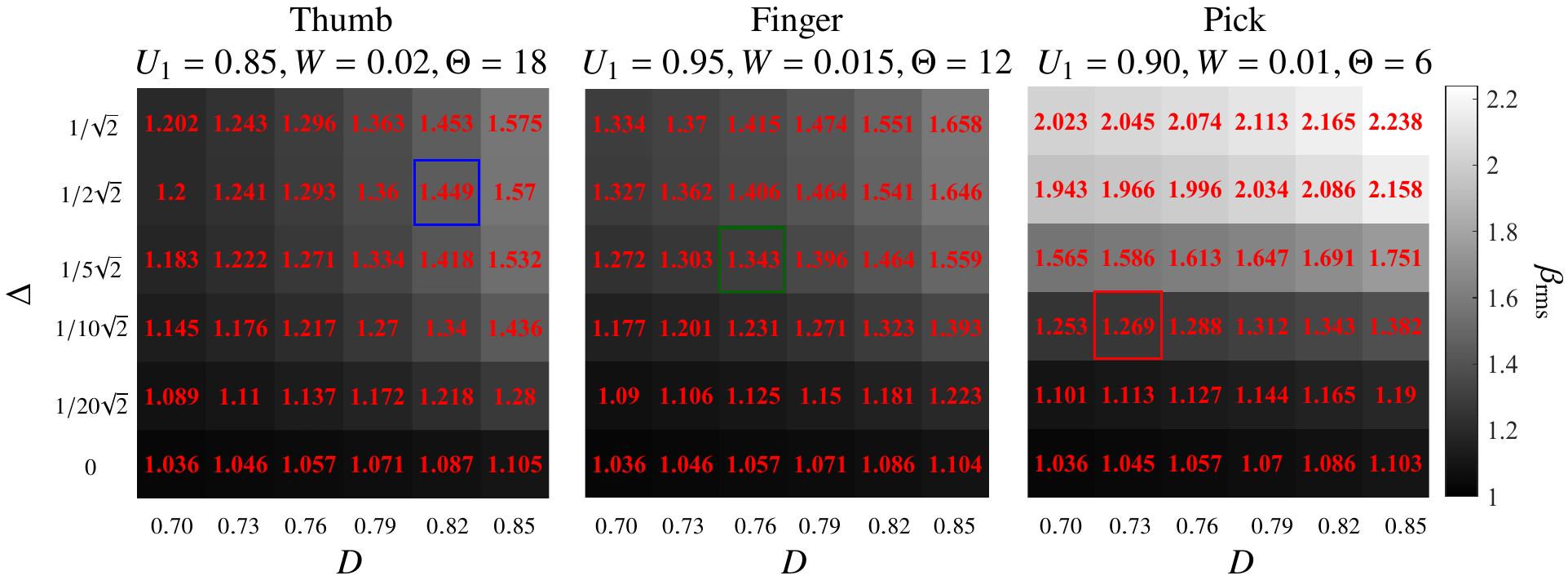To study the timbre (colloquially, the "tone") of jazz guitarists Wes Montgomery and Joe Pass, the excitation of a stiff and lossy guitar string was simulated by modeling the thumb, finger, and pick using functions.
The distribution of frequencies involved in the string's excitation is characterized by the root-mean-squared bandwidth, \(\beta_\mathrm{rms}\), the values of which are shown below as the red numbers for various positions of excitation \(0.70 \leq D \leq 0.85\) (where \(D= 0\) corresponds to the nut and \(D=1\) corresponds to the bridge) and amounts of slipping \(0 \leq \Delta \leq 1/\sqrt2\) (where \(\Delta = 0\) corresponds to pure striking and \(\Delta = 1/\sqrt{2}\) corresponds to pure plucking). [See these slides for more details.]
The blue box corresponds roughly to Montgomery's thumb technique, while the green and red boxes correspond to Pass's fingerstyle and pick technique. The black-to-white gradient represents the values \(1 \leq \beta_\mathrm{rms} \leq 2.238\). Click on each number to hear the corresponding sound.
